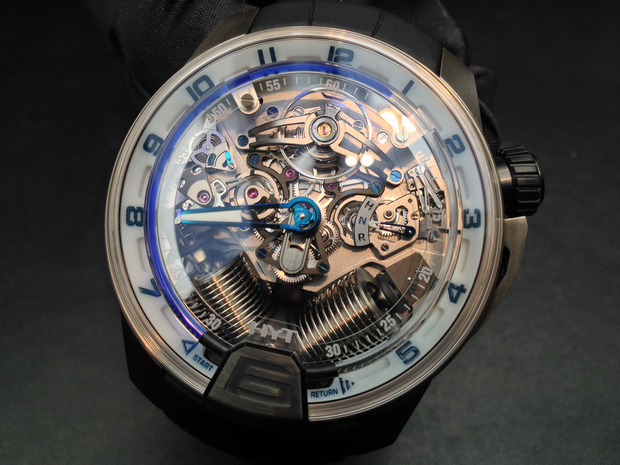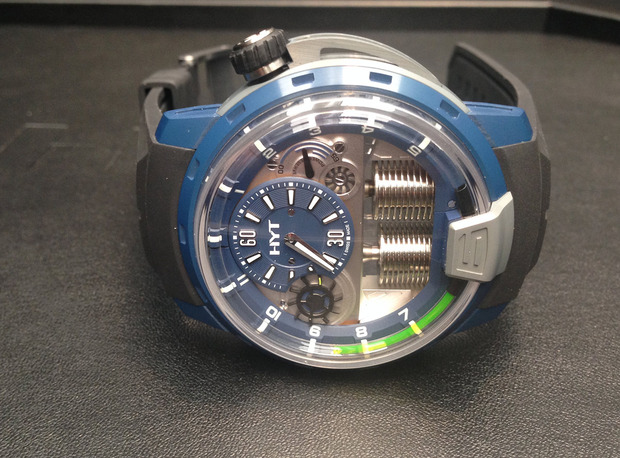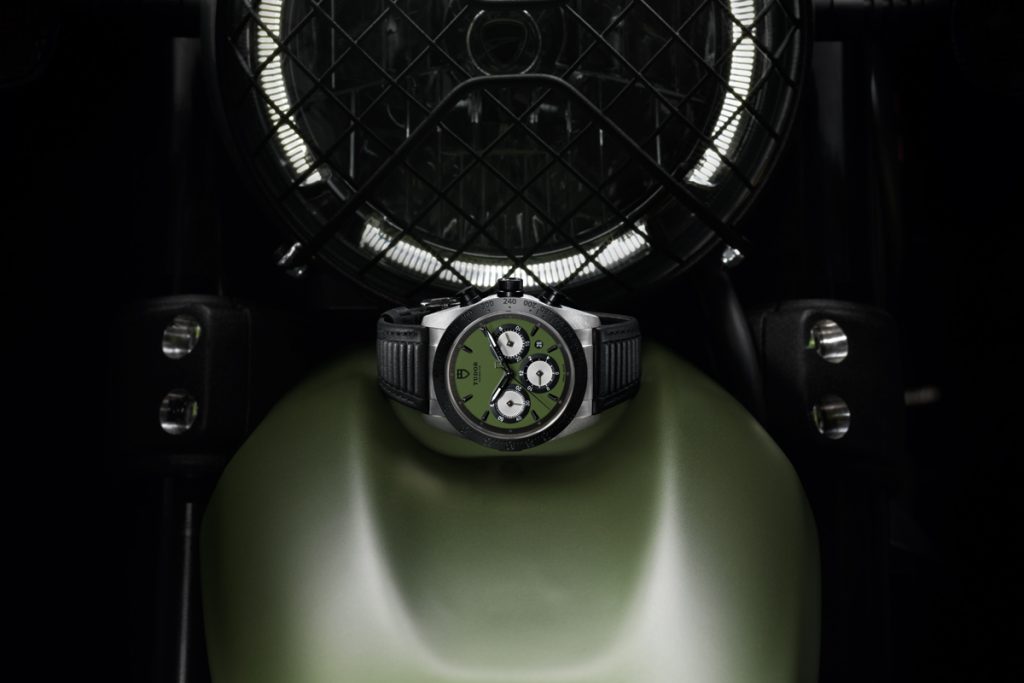Charged: HYT Watches
Fluid mechanics meets haute horlogerie in the Swiss company’s innovative architectural masterpieces

It was 2012 when Swiss watchmaker HYT (short for Hydro Technology) shocked the industry with its H1 wristwatch, but the initial design for the first watch to indicate time with liquid began almost a decade prior. That’s when company founder Lucien Vouillamoz, a former nuclear engineer, began obsessing over a concept that integrates the gravitational energy used in clepsydras (ancient Greek water clocks that use air pressure for movement) within a wearable, mechanical timepiece. The technology did not yet exist, though, to bring Vouillamoz’s liquid-engineered vision to life. And yet, at this year’s Baselworld, not only did we see the magnificent H1, the result of a decade’s worth of design and innovation, we also learned where the exceptionally innovative brand has gone since.

The HYT H1 was the first of its kind: a mechanical watch without an hour hand that indicates the hour with a colored liquid. A traditional hand tracks minutes, and all functionality is controlled by a single crown. The breakthrough in the design came when Vouillamoz thought to utilize two flexible bellows, which are attached to each end of the same indicator capillary. After a year of initial research and development, a prototype was produced. Vouillamoz then enlisted the help of Vincent Perriard, a master within the Nouvelle Horologerie scene who also happened to be dreaming of fluidic watchmaking. Soon, the technical components behind the watch movement were underway. Once Perriard invited the Switzerland-based Etude de Style design lab to refine the details, HYT was formed.
The mechanics of the H1, which date back to ancient Greece, are such: a small capillary circumnavigating the dial fills with a green water-based liquid that contains a fluorescein (a dye normally used as a tracer in chemistry), to indicate the hour. As time progresses, the movement changes pressure on a piston, altering two internal reservoirs, allowing the colored fluid to press against an oil-based (and transparent) counteractive liquid. Thanks to developments made by Vouillamoz, the two liquids never blend, but rather are always in opposition. The vibrant green liquid is pushed from its reserve and forces the oil into its own. When the clock reaches 12, a retrograde function allows reentry for all of the water-based liquid into its bellow. The entire process takes roughly 60 seconds, and then it begins again.

Building off that liquid-based mechanical platform, HYT launched their H2 last year. The second iteration is architecturally different, placing the bellows centrally, as opposed to beneath the mechanical movement as seen in the H1. Sat at three o’clock is a “H-N-R” crown position indicator, evoking a gear stick in a race car. Another hand presents an additional HYT exclusive: a temperature indicator. In the center of it all, a minute hand ticks away, designed to fit within the structure of the fluidic system, meaning that it jumps after 30 minutes to avoid the bellows.

At this year’s Baselworld 2014, HYT showcased an extension to their H1 and H2 lines, both including a new range of materials and colors. The new brilliant blue fluid took 18 months of development to insure it would not mix with its oil-based opponent. Additionally, HYT changed their case materials, allowing for an aluminum met with different alloys—including titanium and magnesium. The resulting composition makes the watch not only lighter but more durable. As the series continues to expand, HYT presses on with meticulous tweaks and changes, constantly bettering the watches’ design and functionality. Yes, the H1 was the first of its kind. But for HYT, that doesn’t seem to be enough. They want to keep imagination at the forefront.
First two photos by David Graver, video and final image courtesy of HYT












